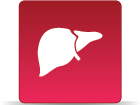Carbon tetrachloride
CASRN 56-23-5 | DTXSID8020250
- Toxicological Review (PDF) (473 pp, 3.04 M)
- IRIS Summary (PDF) (20 pp, 363 K)
On this page:
Noncancer Assessment
Reference Dose for Oral Exposure (RfD) (PDF) (20 pp, 363 K) Last Updated: 03/31/2010
| System | RfD (mg/kg-day) | Basis | PoD | Composite UF | Confidence |
|---|---|---|---|---|---|
| Hepatic | 4 x 10 -3 | Elevated serum SDH activity |
BMDL
2x
(ADJ):
3.9
mg/kg-day |
1000 | Medium |
Reference Concentration for Inhalation Exposure (RfC) (PDF) (20 pp, 363 K) Last Updated: 03/31/2010
| System | RfC (mg/m3) | Basis | PoD | Composite UF | Confidence |
|---|---|---|---|---|---|
| Hepatic | 1 x 10 -1 | Fatty changes in the liver |
BMCL
10
(HEC):
14.3
mg/m3 |
100 | Medium |
Cancer Assessment
Weight of Evidence for Cancer (PDF)
(20 pp, 363 K)
Last Updated: 03/31/2010
| WOE Characterization | Framework for WOE Characterization |
|---|---|
| Likely to be carcinogenic to humans | Guidelines for Carcinogen Risk Assessment (U.S. EPA, 2005) |
- Under the Guidelines for Carcinogen Risk Assessment (U.S. EPA, 2005a), carbon tetrachloride is "likely to be carcinogenic to humans."
- This may be a synopsis of the full weight-of-evidence narrative.
Quantitative Estimate of Carcinogenic Risk from Oral Exposure (PDF) (20 pp, 363 K)
Oral Slope Factor:
7
x 10-2
per mg/kg-day
Drinking Water Unit Risk:
2
x 10-6
per µg/L
Extrapolation Method: Multistage model with linear extrapolation from the POD (LED10).
Tumor site(s): Hepatic
Tumor type(s): Hepatocellular adenoma or carcinoma (Nagano et al., 2007b, JBRC, 1998)
Quantitative Estimate of Carcinogenic Risk from Inhalation Exposure (PDF) (20 pp, 363 K)
Inhalation Unit Risk:
6
x 10-6
per µg/m3
Extrapolation Method: Log-probit model with linear extrapolation from the POD (LEC10).
Tumor site(s): Endocrine
Tumor type(s): Pheochromocytoma (Nagano et al. 2007b, JBRC 1998)
Chemical Documents
Mar 2010: IRIS Toxicological Review of Carbon Tetrachloride (Final Report) (Report)
Nov 2009: IRIS Toxicological Review for Carbon Tetrachloride (Interagency Science Discussion Draft) (Report)
May 2008: IRIS Toxicological Review of Carbon Tetrachloride (External Review Draft) (Report)
Sep 1989: Health Effects Assessment for Carbon Tetrachloride (Updated 1989) (Report)
Sep 1986: Health Effects Assessment for Carbon Tetrachloride (1986) (Report)
Sep 1984: Health Assessment Document for Carbon Tetrachloride (Final Report, 1984) (Report)
Mar 1982: Health Assessment Document for Carbon Tetrachloride (External Review Draft,1982) (Report)
Other EPA Information
- Human Health Benchmarks for Pesticides (HHBP). This database provides human health benchmarks for pesticides that may be present in drinking water.
- Office of Pesticide Programs Pesticide Chemical Search. This database provides links to health effects information and registration status for pesticides.
- Chemistry Dashboard. This database provides information on chemical structures, experimental and predicted physicochemical, and toxicity data.
Critical Effects
Chemical Structure

Synonyms
- Acritet
- Benzinoform
- Carbo tetrachloride
- Carbon chloride
- Carbon tet
- Carbon tetrachloride
- Carbona
- Czterochlorek wegla
- ENT 4,705
- Fasciolin
- Flukoids
- Freon 10
- Halon 104
- Mecatorina
- Methane tetrachloride
- Methane, tetrachloro-
- Necatorina
- Necatorine
- Perchloromethane
- R 10
- Tetrachloorkoolstof
- Tetrachloormetaan
- Tetrachlorkohlenstoff, tetra
- Tetrachlormethan
- Tetrachlorocarbon
- Tetrachloromethane
- Tetrachlorure de carbone
- Tetrachorkohlenstoff Uvasol
- Tetraclorometano
- Tetracloruro di carbonio
- Tetrafinol
- Tetraform
- Tetrasol
- Univerm
- Ventox
- Vermoestricid
- WLN: GXGGG
- 56-23-5



